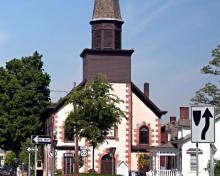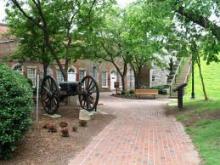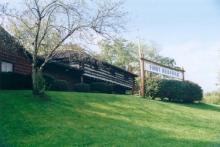Fort Wayne

The fort was used to house and train troops from the Civil War era until Vietnam. Its 82-acre riverside site makes it ideal for tourism and public events.
In 1840, at the point on the Detroit River closest to British Canada, the United States Army began surveying local farms for the placement of new artillery post. A five point star fort was slated to have the most up to date cannon capable of firing on the Canadian shore as well as ships sailing the river.
This new fort was Detroit’s third, the first built by the Americans. In 1701, shortly after Cadillac landed, the French began building Fort Detroit, which was surrendered to the British in 1760 during the French and Indian War. The British built a new fort several years later and name it Fort Lernoult, which they occupied until 1796 when the United States took over Detroit and renamed the battlement Fort Shelby.
Following the War of 1812, Fort Shelby fell into disrepair while the threat of a territorial war still loomed with British Canada. As tensions increased along the Northern border defense that includes new forts from the east coast to the Minnesota Territory. The Detroit fort would be named for General Anthony Wayne whose defeat of the British at the Fallen Timbers in 1796 resulted in the United States occupation of the Northwest Territories.
Diplomacy intervened, however, in the mission of Fort Wayne. Before any cannon were even procured for the new fort, the United States signed a treaty with Britain that called for diplomatic solutions to their territorial disputes. The new Fort was re-commissioned as an infantry garrison, but did not see any troops until the outbreak of the Civil War, when the first Michigan soldiers reported for duty.
Because of new relationship with the Britain and later Canada, Fort Wayne never saw a shot fired in anger. The peaceful location became a primary induction center for Michigan troops entering battle in every U. S. conflicts from the Civil War to Viet Nam. Among other duties over the course of it’s 125 year use as an Army base, it served as an infantry training station, housed the Chaplin school for a few years, and was the primary procurement location for the vehicles and weapons manufactured in Detroit during both World Wars. Also during the WWI and WW II the Fort housed prisoners of war from Italy and Russia.
Beginning in 1948, the Fort was given to the City of Detroit in parcels. Over the next 28 years, the City would come to own the entire reservation with the exception of nine acres still occupied by the Army Corps of Engineers. Today you can visit the original 1848 limestone barracks building, 1845 Star Fort which was renovated in 1861, the restored Commanding Officers house, Spanish American War guard house and the Tuskegee Airmen Museum. Today Fort Wayne is coming back to prominence and the preservation is underway.






























